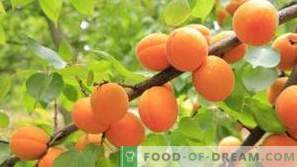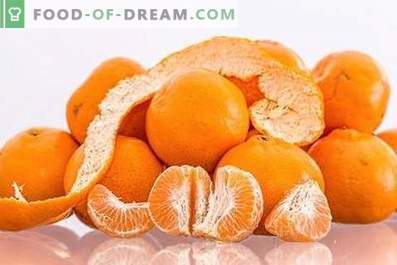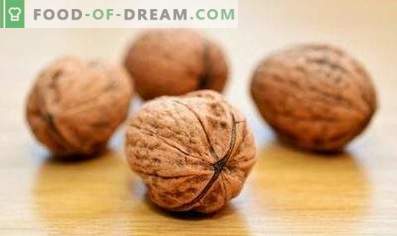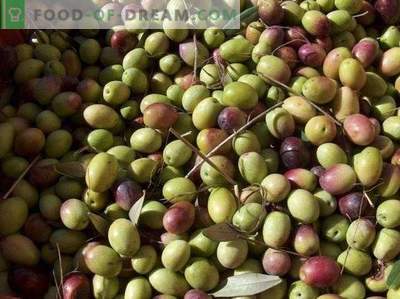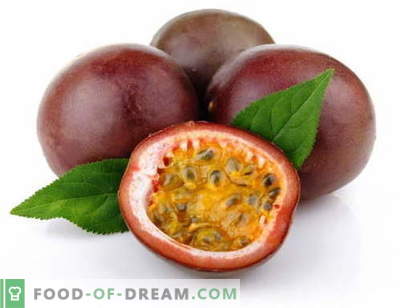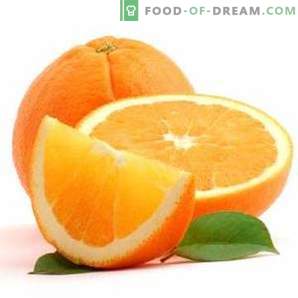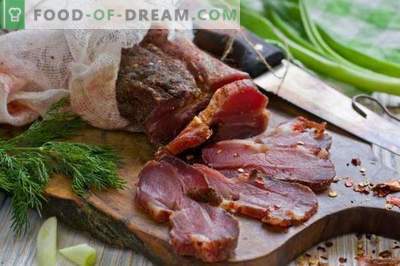
Widely known in the world and beloved by many, orange is a fruit tree of the citrus family of the Rut family. This fruit is considered the most common citrus crop in the tropics and subtropics. Orange is the closest relative of mandarin and pomelo. Its Latin name is C? Trus sin? Nsis. In the Netherlands, the fruit is called “appelsien” or “sinaasappel”, which became the source of the usual name - “orange”. In German, the word sounds similar: Apfelsine, and the French phrase “pomme de Chine” translates as “an apple from China”. At present, the use of the term “orange” prevails in both English and French.
The cultivation of oranges began in China about two and a half thousand years BC. er Already in the 15th century, the Portuguese brought strange orange fruit to Europe. There was a fashion for growing tropical trees in special structures made of thin glass. They were called greenhouses, which is one-root word for “orange” - the name of an orange in France. These trees without special care grow in the Mediterranean and in the central regions of the Americas.
The orange tree is considered to be very tall, as it can reach 12-14 meters. Some orange trees have a sprawling crown and live up to one and a half hundred years. Depending on the yield of the season, one tree can produce up to 40,000 fruits. Between winged petioles and whole perennial leaves are wide intermediate joints. White flowers are arranged in clusters of six, and include a five-part, low-opening perianth with large lobes, a large number of stamens, and a single free (so-called upper) ovary. The multi-seeded fruits of orange consist of several nests and have a strong two-layer peel. The flesh is formed by a dense accumulation of juice bags in the form of a spindle, which originated from the outgrowths of the inner carpel epidermis. Similar to the type of citrus fruit, the fruit is called “hesperides” and refers to the berry-like formations. Orange pulp is easy to break into shares, representing the nests of the fruit. The outer layer of hesperidium in orange fruit is called “flavedo” because of its bright color (in Latin “flavus” means “yellow”). It contains a lot of essential oil, enclosed in transparent spherical glands. The spongy structure of the inner part of the hesperidium and the pale color gave reason to call this layer “albedo” (Latin albus - white). The friability of albedo makes it easy to separate the orange pulp and its peel.
Market trends indicate that large juicy oranges with thin skin are more in demand. As a result of such requirements, fruits brought from Genoa, Sicily or from Malta are becoming more popular. Peel and peel (its top layer) of these fruits are often used to create preserves, liqueurs and infusions. In particular, strong drinks based on orange zest are very popular in Bologna and Florence. Orange oil can also be extracted from this starting material. When being transported, the fruits can be quickly washed and spoiled, therefore, like bananas, they are removed from the trees unripe and taken in large boxes (no more than 500 pieces each) wrapped in paper.
Import of oranges occupies a significant market share in some US states (California, Florida), in the states of the Mediterranean strip, in Central Asia and in the Far East. Over the past twenty years, the volume of production of this fruit has almost doubled, which indicates its continued popularity among consumers.
Nutrition and vitamin value of orange fruit
The high content of beneficial components and vitamins allows us to recommend oranges for the prevention and treatment of metabolic problems, heart disease, liver disease, imbalance of vitamins. The juice of this tropical fruit perfectly eliminates scurvy and vitamin deficiency. 100 g of the fruit of oranges contains:
- 0, 89 g of proteins
- 0, 19 g of fat
- 8, 21 g of carbohydrates
- 2, 39 g of fiber
- 9, 29 g of simple carbohydrates
- 2, 19 g of dietary fiber
- 1, 29 g of organic acids
- 87 g of water
- 8, 01 g of monosaccharides and disaccharides
- 0, 45 g of ash
Orange pulp is extremely rich in vitamins of all groups:
- 0, 051 mg of beta-carotene
- 8, 1 mcg of vitamin A (ER)
- 0, 043 mg of thiamine (B1)
- 0, 031 mg of riboflavin (B2)
- 0, 29 mg of pantothenic acid (B5)
- 0, 061 mg of pyridoxine (B6)
- 5, 12 μg of folic acid (B9)
- 65, 5 mg of ascorbic acid (C)
- 0, 19 mg of vitamin E (TE)
- 1, 1 μg of biotin (H)
- 0, 31 mg of niacin equivalent (PP)
Caloric content of orange fruit
The indisputable advantages of orange over other dietary products are very low content of saturated fats, high concentration of sugar and the absence of cholesterol. The energy value of an orange is approximately 45 kcal per 100 g of product. Such a low calorie content makes it possible to consider the use of an orange as one of the most successful recommendations for those who are overweight or trying to lose weight. A more accurate energy value for an individual fetus is calculated on the basis of its mass:
- Orange fruit with a diameter of 6.5 cm - 100 g - calories 45 kcal.
- Orange fruit with a diameter of 7.5 cm - 150 g - calorie 67, 5 kcal.
All citrus fruits contain a small amount of calories. However, the uniqueness of the orange is that its main mass (more than 85%) is water, and the main source of calories is not fats, but carbohydrates. In the pulp of oranges there is only 0, 2% of fat (if calculated in relation to the mass of the fruit) and 0, 9% of proteins. Almost a tenth of the fruit consists of carbohydrates, which are easily split in the body with the release of large amounts of energy. In particular, it is monosaccharides and disaccharides (simple carbohydrates) that are almost instantly absorbed into the bloodstream, invigorate and refresh the body. Important organic acids in the composition of oranges contribute to the breakdown of fat accumulated in the body, and dietary fiber actively helps the processes of digestion and promote the removal of toxins. Orange juice has healing properties and is low in calories. 100 ml of freshly squeezed juice contains approximately 40-60 kcal (a more accurate value depends on the degree of squeeze). The properties of oranges valued by nutritionists are complemented by the fact that this fruit quickly satisfies hunger. This fruit is advised to use during a snack, to cheer up and not to eat too much during the upcoming main meal.
Elemental composition of minerals in oranges
Orange pulp can compensate for the daily human need for many important elements. Copper, cobalt and boron are particularly notable for their content, the mass of which in 100 g of the fruit guarantees a 10 percent daily allowance for an adult organism.
Macroelements in 100 g of orange:
- 35 mg of calcium (Ca)
- 14, 2 mg of magnesium (Mg)
- 14, 1 mg of sodium (Na)
- 197, 7 mg of potassium (K)
- 24 phosphorus (P)
- 2, 8 mg of chlorine (Cl)
- 8, 8 mg of sulfur (S)
Trace elements per 100 g of orange:
- 0, 31 mg of iron (Fe)
- 0, 21 mg of zinc (Zn)
- 2, 23 mcg of iodine (I)
- 68 µg copper (Cu)
- 0, 031 mg of manganese (Mn)
- 17, 1 μg of fluorine (F)
- 182 µg of boron (B)
- 1, 12 µg cobalt (Co)
Useful properties of orange fruit
- One fruit contains more than 60% of the daily intake of vitamin C (ascorbic acid). Sugar content reaches 12%. The above qualities of an orange contribute to its active absorption by the body, strengthen the immune system and fight against viral diseases.
- These fruits help out if there are problems with the locomotor system. Recovery of bone tissue is possible due to the high calcium content in the fruit pulp. In this case, B vitamins neutralize the effects of anemia and weakness.
- There are even more vitamins in the peel of the fruit than in the pulp. Instead of throwing it away, you can make candied fruit, compotes, or kiselis. However, it should be borne in mind that before selling in stores, the peel of oranges is subjected to chemical treatment, therefore it is not always possible to use it entirely.
- White hard partitions between slices of orange should not be removed before eating fruit. They are extremely useful due to the high concentration of pectin and bioflavonoids.
- The fruit crust is also very rich in pectin. This component has a beneficial effect on the intestines and stomach, since it has laxative properties.
- The mentioned pectin leads to a feeling of fullness after digestion of an orange. Such a property and low calorie pulp of the fruit are very helpful not to eat extra foods for those who are on a diet.
- An orange peel has many vitamins, as well as citric and pectic acid. Mentioned acids are phytoncids, that is, are natural antibiotics. This in antiquity allowed the use of oranges as real medicines. For many years now, this tropical fruit has been used as a remedy against constipation, vitamin deficiency and low acidity.
- Essential oils and pectin lower blood cholesterol and become an excellent prevention of heart attacks.
- Folic acid and limonoids can gradually reduce the rate of growth and development of cancer cells.
- Oranges and their juice are especially beneficial for pregnant women, since vitamin B9 prevents the occurrence of congenital defects in a baby.
Contraindications to the use of orange
Orange oil should not be taken on an empty stomach and in quantities of more than 3 drops per day. Although the fruit contains many beneficial components, orange can cause serious allergies, so you need to be aware of the possibility of individual intolerance to this product. After bathing with the addition of orange oil, a slight burning of the skin on the abdomen, thighs and shoulders can be felt. Also, dentists warn that after eating an orange can not brush your teeth for the next half hour, because of the high acidity of the tooth enamel becomes softer and can be damaged.

